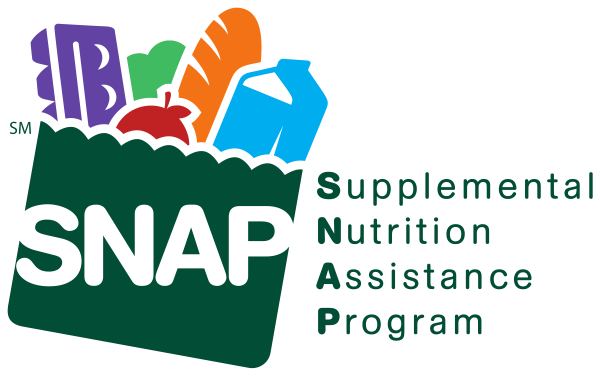
Citing “record low unemployment,” USDA finalizes rule to promote work
At the direction of President Donald J. Trump, U.S. Secretary of Agriculture Sonny Perdue has announced a final rule to move more able-bodied recipients of the Supplemental Nutrition Assistance Program (SNAP) towards self-sufficiency and into employment. The rule, the administration says, restores the system to what Congress intended: assistance through difficult times, not a way of life.
“Americans are generous people who believe it is their responsibility to help their fellow citizens when they encounter a difficult stretch. Government can be a powerful force for good, but government dependency has never been the American dream. We need to encourage people by giving them a helping hand but not allowing it to become an indefinitely giving hand,” said Secretary Perdue. “Now, in the midst of the strongest economy in a generation, we need everyone who can work, to work. This rule lays the groundwork for the expectation that able-bodied Americans re-enter the workforce where there are currently more job openings than people to fill them.”
More from Secretary Perdue can be found in his Arizona Daily Star op-ed: The dignity of work and the American Dream.
Background:
In 1996, when then President Bill Clinton signed welfare reform instituting the current work requirements for able-bodied adults without dependents (ABAWDs) he said, “First and foremost, it should be about moving people from welfare to work. It should impose time limits on welfare… It [work] gives structure, meaning and dignity to most of our lives.”
With a booming economy that has more jobs than workers to fill them and the lowest unemployment rate in more than 50 years, now is the time for every work-capable American to find employment. In fact, the latest U.S. Department of Labor (DOL) figures show the unemployment rate is 3.6% and there are 7.0 million job openings. The longer an individual is out of the workforce, the harder it is to re-enter. Now is the time for these individuals to enter, reenter, and remain in the workforce.
To put things in perspective, in 2000, the unemployment rate was 4% and the number of Americans receiving SNAP benefits was just over 17 million. In 2019, during the longest economic expansion in history, the unemployment rate is 3.6% and yet the number of Americans receiving SNAP is over 36 million.
The U.S. Department of Agriculture’s (USDA) final rule promotes work for able-bodied adults between the ages of 18 and 49 without dependents and does not apply to children and their parents, those over 50 years old including the elderly, those with a disability, or pregnant women.
Long-standing SNAP statute limits these adults to three months of benefits in a three-year period – unless they work or participate in work training for at least 20 hours per week. The law allows states to apply for waivers of this time limit due to economic conditions, but prior to the rule, counties with an unemployment rate as low as 2.5% were included in waived areas. Under USDA’s rule, states retain their statutory flexibility to waive the time-limit in areas of high unemployment and to exempt a percentage of their ABAWD caseload. Even when working, those who qualify from an income perspective, will still receive their SNAP benefits.
There are multiple ways for individuals to engage and maintain their SNAP benefits, from working, to preparing for work, and volunteering. States have a responsibility to assess individuals as work-capable and must renew their focus on helping SNAP participants to find a path to self-sufficiency. There are a number of tools to assist with challenges. For example, states are provided funding to operate Employment and Training programs, which can provide everything from job training to necessary work supports, such as boots, uniforms, and transit subsidies. States also have access to programs and services provided by other Federal agencies, state and county governments, and local service providers.
- Secretary Perdue and Deputy Under Secretary’s SNAP Reform Audio call (MP3, 17.0 MB)
- Employment for Work-Capable Adults Fact Sheet (PDF, 356 KB)
- Final Rule: Supplemental Nutrition Assistance Program: Requirements for Able-Bodied Adults without Dependents
- 2019 memo to states (PDF, 204 KB) on SNAP employment and training resources available.
- Secretary Perdue’s 2018 letter to states (PDF, 109 KB) asking them to review their policy choices concerning when and where to request ABAWD waivers and to ensure their systems are up-to-date to track ABAWDs.
- November 2015 memo providing guidance (PDF, 75 KB) to states in taking the balanced approach necessary to properly implement the SNAP time limit for ABAWDs.
USDA’s FNS administers 15 nutrition assistance programs that leverage American’s agricultural abundance to ensure children and low-income individuals and families have nutritious food to eat. FNS also co-develops the Dietary Guidelines for Americans, which provide science-based nutrition recommendations and serve as the cornerstone of federal nutrition policy.


Chattooga Public Safety
Most Recent Chattooga County Food Service Inspections

Bulloch Public Safety
7/25/2025 Booking Report for Bulloch County

Chattooga Local News
Red Light Therapy Comes to Summerville: What You Need to Know

Bulloch Public Safety
7/21/2025 Booking Report for Bulloch County

Bulloch Public Safety
06/30/2025 Booking Report for Bulloch County

Bulloch Public Safety
7/14/2025 Booking Report for Bulloch County

Bulloch Public Safety
7/18/2025 Booking Report for Bulloch County

Bulloch Public Safety
7/11/2025 Booking Report for Bulloch County







